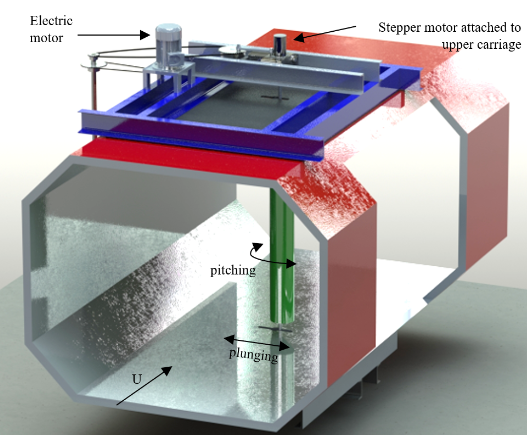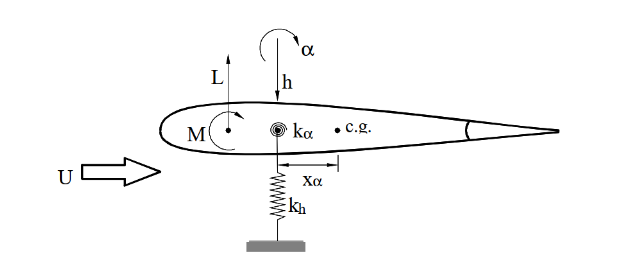Aeroelasticity
Wind Tunnel gives the ability to study the interactions between the inertial, elastic, and aerodynamic forces occurring while an elastic body is exposed to a fluid flow.
The blades of a helicopter or a wind turbine, as well as the wings of an air-craft may encounter under certain flow conditions oscillations of the inflow angle. This type of unsteady aerodynamic loading, affects the performance, operation and fatigue life of aero-elastic-structures and defines the limits of their operation. It is thus important, both from technical and scientific point of view, to study such phenomena and be able to predict accurately aeroelastic loads during unsteady aerodynamic effects.
A typical example is the study of an oscillating wing with elastic support mechanisms. This can be installed on the 3rd Wind Tunnel Section, where Umax=60m/s. The wing drive mechanism allows oscillations of two degrees of freedom: a) a linear oscillation perpendicular to the free stream (plunging) and b) an angular-rotational oscillation about the wing spanwise axis (pitching). A scheme of the mechanism for the wing aeroelastic model is shown in the figures below.
The difficulty of understanding unsteady aerodynamic phenomena still exists, because of their poly-parametric nature: pitching – plunging amplitude, mean angle, reduced frequency, airfoil shape, location of pivot point, Reynolds number, phase angle between pitching and plunging.







